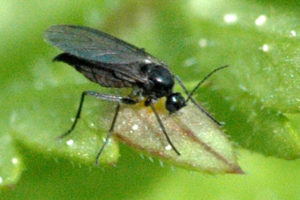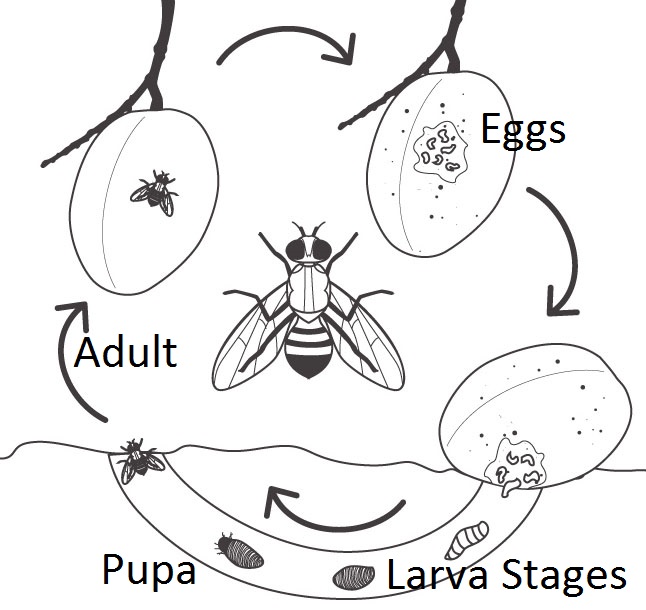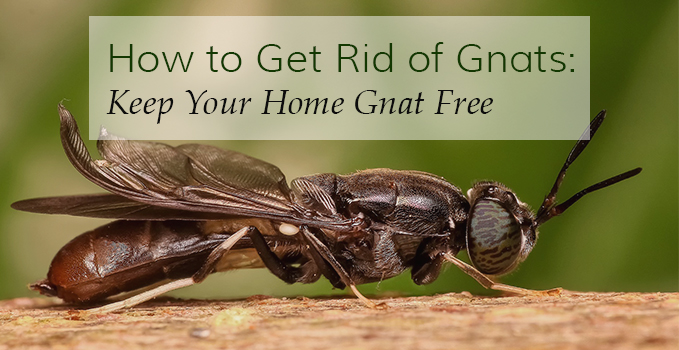
If you live in a place with a tropical weather, you might encounter a gnat problem. They can be very irritating, especially during the rainy season.
If you have a gnat problem, don’t fret—this guide will show you what the best way to kill gnats is. You will also learn some tricks on what keeps gnats away.
Types of Gnats
There are different types of gnats that infest our homes and neighborhoods. Some of the most common types of gnats include the fungus gnat, the drain gnat, the sand gnat, the fruit gnat, and the bull gnat.
Fungus gnats
The fungus gnat (scientific name Exchechia nugatoria) is a tiny fly that feed on plant roots and fungi.
Though it is a winged insect, it is a weak flier. It normally walks on the soil and the surface of plant leaves in order to move around.
As an adult, the fungus gnat can grow up to 2 to 5 millimeters long. It might be small, but it can withstand extremely cold temperatures because of the antifreeze protein that its body has.
Drain gnats
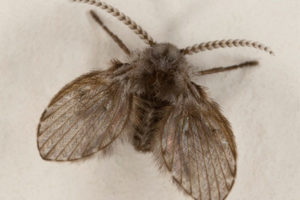
The drain gnat (scientific name Clogmia albipunctata) is an insect commonly found in places with a humid weather.
It is also called the moth fly because of its hairy body and wings.
This type of gnat resides in drainage and sewer systems. It is typically harmless, but can be very annoying in large groups.
When full grown, it can measure from about 1.5 to 5 millimeters long.
Sand gnats
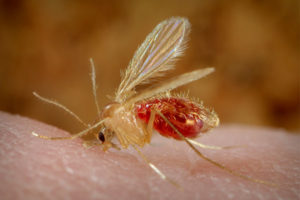
The term “sand gnat” is a general term given to numerous blood-sucking dipteran insects that are found in sandy areas, such as those in Arizona, Florida and Georgia.
Therefore, if a person complains about sand gnats, he may be referring to horseflies or no-see-ums.
When they bite, they leave red bumps on the skin, like a mosquito bite.
They also carry a disease called leishmaniasis, which is a parasitic disease that causes infection on the skin.
Sand gnats vary widely on size, depending on the species of the insect. In average, a horsefly can measure up to about 35.5 millimeters long, while a no-see-um only measures from about 1 to 4 millimeters long.
Fruit gnats
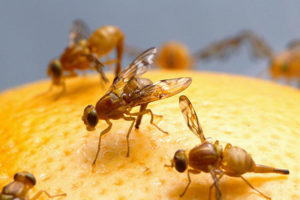 Just like the sand gnat, the fruit gnat may refer to different types of winged dipteran insects that belong to the families of Tephritidae and Drosophilidae.
Just like the sand gnat, the fruit gnat may refer to different types of winged dipteran insects that belong to the families of Tephritidae and Drosophilidae.
Examples of insects that belong to these families include the Bactrocera dorsalis or the Oriental fruit fly, the Bactrocera tryoni or the Queensland fruit fly, the Drosophila melanogaster or the common fruit fly, and the Drosophila suzukii or the vinegar fly. As the name suggests, a fruit gnat feeds on fruits.
Bull gnats
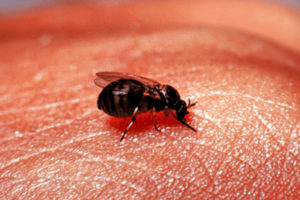 The bull gnat, or the buffalo gnat, is another term that is used to identify the black fly. It is also a general term that refers to black-colored dipteran insects of the family Simuliidae.
The bull gnat, or the buffalo gnat, is another term that is used to identify the black fly. It is also a general term that refers to black-colored dipteran insects of the family Simuliidae.
There are over 1800 species of the bull gnat, but common types include the Simulium posticatum or the Blandford fly, and the Simulium truncatum or the short black fly.
Male bull gnats usually feed on nectar, while female bull gnats practice anautogeny, in which they feed on the blood of vertebrae animals so as to help their eggs mature.
Gnat vs fruit fly
While the term “fruit fly” refers to a more specific group of insects that feed on fruits and other sugary substances, the term “gnat” refers to an entire order of insects to which the fruit fly is actually a part of.
In other words, the fruit fly is a kind of gnat.
Understanding Gnats
The word “gnat” is a representative term for many species of flying insects belonging to the order Diptera. Some of them may appear like mosquitoes, although they may lack the latter’s proboscis.
Others, meanwhile, look like common houseflies.
Now that you know about the different types of gnats, it’s time to answer some of the most frequently asked questions about these dipteran insects.
Where do gnats come from?
Gnats come from eggs laid by an adult female gnat. A gnat goes through 3 stages before becoming a full-grown adult. The first stage is the egg stage, the second stage is the larva stage, and the third stage is the pupa stage.
As you already know, the last stage of a gnat’s life cycle is the adult stage.
The length of each stage depends on the species. A fungus gnat, for example, finishes the egg stage and enters the larva stage just 3 days after the adult female gnat has laid the egg.
After 14 days, the larva turns into a pupa, and after another 3 days, the pupa turns to a full-grown adult.
The lifespan of gnats varies according to the species too. Some may live from about 3 to 5 days, while others can live from about a week to a few weeks.
How and Where do gnats breed?
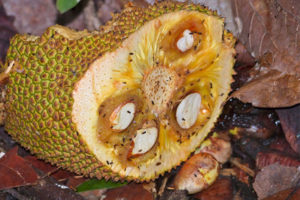 Gnats travel in groups for the purpose of mating. When an adult female gnat is about to lay its eggs, it may practice anautogeny, which involves a blood diet taken from vertebrae animals. After mating is done, the adult female gnat will lay its eggs on still water or wet soil.
Gnats travel in groups for the purpose of mating. When an adult female gnat is about to lay its eggs, it may practice anautogeny, which involves a blood diet taken from vertebrae animals. After mating is done, the adult female gnat will lay its eggs on still water or wet soil.
Where do gnats live?Gnats are mostly found in humid and tropical areas. A tropical weather means regular rainfall, which offers the best condition for laying eggs.
In your house, you might also find gnats swarming around humid or moist spots. Gnats in sink, gnats in plants, and gnats in soil are common problem areas.
Finding gnats in yard is especially problematic because these insects find sustenance from your flowers and other plants.
What are gnats attracted to?
 Gnats are attracted to moist and humid environments because it provides viable spots for reproduction. If you live in a desert or tropical area, you will most likely encounter a gnat infestation.
Gnats are attracted to moist and humid environments because it provides viable spots for reproduction. If you live in a desert or tropical area, you will most likely encounter a gnat infestation.
Gnats are also attracted to light. Leaving the light on in your porch at night will result to a swarm of gnats flying about your property.
If you happen to leave the door or windows open, they will also come into your house and swarm by your indoor lights.
Lastly, gnats are attracted to the scent and moisture of most organic materials, especially when these materials are in the process of decomposing. Usually these decomposing organic materials are infested with fungus, which some gnats like to eat.
Also take note that some gnats don’t eat anything at all, which contributes to their short lifespan. They are attracted to plants because the soil around them are usually moist from watering.
Do gnats bite?
Biting gnats are usually not the case. However, as mentioned earlier, adult female gnats may feed on blood when they’re about to lay eggs. The blood will help their eggs mature properly.
Gnat bites don’t appear right away. But, when they do, the skin will swell up, forming a red and itchy bump that looks like a mosquito bite.
Why do I have gnats in my house?
 There are several reasons as to why you have gnats in the house. One, you might have a lot of indoor plants that are potted with moist soil. This is a good breeding spot for gnats and the reason why you have gnats in your home.
There are several reasons as to why you have gnats in the house. One, you might have a lot of indoor plants that are potted with moist soil. This is a good breeding spot for gnats and the reason why you have gnats in your home.
The second reason is clutter. Again, gnats are attracted to the scent and moisture of decaying organic materials. If you have an uncovered garbage bin, or if you don’t take your trash out regularly, gnats may infest your house.
Lastly, if there are any still water in your house, such as in your vases, roof drainage systems or clogged sinks, gnats will swarm these areas in your house and breed in them.
How to Get Rid of Gnats
So you have a gnat infestation problem. What can you do to solve it? In this section of the guide, you’ll find natural and commercial gnat repellents that will help you effectively eliminate gnats in your home all by yourself.
Natural Gnat Repellent
Natural repellents are a good solution to your gnat infestation problem. There are a lot of home remedies for gnats in the house that you can create all by yourself. You can use essential oils for gnats, plant plants that repel gnats, or create your very own homemade gnat spray and trap.
Here are some quick and easy home remedies for gnats that you can DIY.
Essential Oils for Gnats
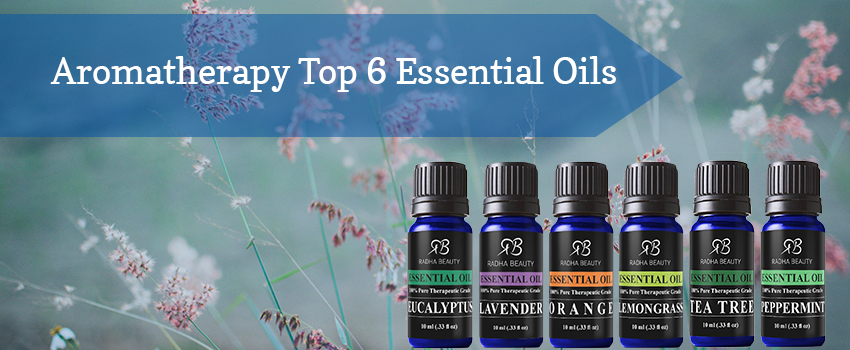
Essential oils don’t just make your house smell good. They are also natural repellents against gnats.
Some of the most effective essential oils for gnats include catnip, cinnamon, citronella, eucalyptus, lemon, lemongrass and spearmint. Thyme is also a good natural solution for your gnat infestation problem.
In fact, a study conducted by the American Mosquito Control Association found out that thyme is 91% effective in repelling mosquitoes and gnats – a great way to smell good, feel good, and repel pests at the same time!
You can use any of these essential oils, or better yet combine any two of them, to create your own gnat trap. You can also use scented candles infused with any of these essential oils, placing them in problem areas around your house.
Plants that Repel Gnats

There are four outdoor plants that repel gnats naturally and effectively. You can plant them in your yard or garden to get rid of the gnats that infest your property. These plants are geraniums, Mexican marigolds, lavenders, and lemon thymes.
Geraniums are beautiful flowering plants, and they also contain citronella that is a good natural gnat repellant.
Meanwhile, the leaves of Mexican marigolds have a musty scent that most flying insects, including gnats, don’t like. They will repel these obnoxious insects away while also adding color to your garden or yard.
The scent of lavenders also repels gnats. You can plant this flowering plant in your garden, or you can put the flowers in a vase and place them inside your house.
Lastly, the leaves of lemon thyme smells like green lemons, which you already know is a natural gnat repellent. This plant also contains citronella.
Homemade Gnat Sprays and Traps
If you don’t have time to plant new plants in your garden or yard, here are some homemade gnat sprays and traps that you can create with common household items.
Vinegar Spray
Does vinegar kill gnats? Yes it does. In fact, you can make a homemade gnat spray with a small amount of vinegar mixed with water. Here’s how you do it:
- In a spray bottle, mix a splash of vinegar (any kind will do) with some water.
- Test the mixture on a single leaf first. Spray the solution on a leaf, and then let it soak for a few hours to a few days.
- If the vinegar doesn’t burn the leaf, you can go on and spray the mixture to plants where gnats usually swarm to.
- If the vinegar burns the leaf, add more water to the solution, and then repeat steps 2 to 4 as needed.
Vegetable Oil Spray
This vegetable oil spray will work on drains and sinks. Here’s how to make and apply it:
- Mix half a cup of vegetable oil with a few drops of an essential oil of your choice. (You can skip this step if you want to.)
- Put the mixture in a spray bottle and set aside while you do step 3.
- Cover your sink with cling film. (You can also use clear tape for this step. It will help you better trap the gnats in your drain.) However, do not seal off the sink with the cling film yet. Move on to step 4.
- Spray the mixture onto your sink. It will also help if you pour some of the spray around the edge of the drain. This will help the oil to slide and cling onto the sides of the pipe.
- After you spray and pour the oil, cover the entire sink with the cling film. After 24 to 48 hours, you’ll notice gnats stuck on the cling film.
Apple Cider Vinegar Trap
This trap will work with any type of vinegar, but apple cider works best. If you are, however, working with white vinegar, you might need to add a few drops of lemon-scented dishwashing soap to make the trap more attractive to gnats. Anyway, this is how to catch gnats with vinegar:
- Fill an empty jar halfway through with apple cider vinegar.
- Using cling film (or any type of clear plastic, for that matter; just secure the plastic with a rubber band if you’re not using cling film), cover the mouth of the jar.
- Poke holes on the plastic so the gnats have a place to enter through.
- Leave the jar in an area where gnats usually swarm. You can fill more than one jar if there are multiple areas in your house that are infested with gnats.
- After a few hours to a few days, you’ll notice gnats entering the jar. They can’t, however, leave it, so they’ll remain trapped and drown inside.
- Throw away the apple cider vinegar trap once you’ve noticed gnats floating on the surface. You can replace the vinegar inside the jars and set new traps if there are still some gnats left behind.
Soap and Wine Trap
 So this is not exactly a purely natural solution, but it will still do the trick. All you need is a couple of drops of dishwashing soap and a shot of cheap red wine. Here’s how you do it.
So this is not exactly a purely natural solution, but it will still do the trick. All you need is a couple of drops of dishwashing soap and a shot of cheap red wine. Here’s how you do it.
- In a shot glass or a small cup, pour a splash of cheap red wine. The container must be three-quarters full.
- Next, add a few drops of dishwashing soap. Stir with a spoon or a plastic stirrer.
- Leave the mixture in problem areas around the house. You don’t need to cover the shot glass with cling wrap because the dish soap will do the trick and trap the gnats in the solution.
There’s a scientific explanation to this trick: The dishwashing soap actually breaks the surface tension of the red wine. Hence, when the gnats try to sit on the surface of the red wine to lay their eggs, they will, instead, fall through the surface and drown.
Vanilla Repellent
Aside from essential oils and homemade solutions, you can also create a vanilla repellent that you can apply directly onto your skin. Here are the steps.
- Mix a cup of water with a tablespoon of vanilla. Make sure to stir well.
- Apply the mixture to your body to repel gnats. You can also use this vanilla repellent in sensitive areas of your body, such as around your eyes and nose.
Commercial Repellent
 There are also commercial sprays that you can use to remove your gnat infestation. Of course, you can use a pesticide spray, but you should avoid this option if you can. Not only is commercial pesticide unsafe for your health; it may also be an expensive option. You most likely need to hire an expert exterminator to apply pesticide in your house. Worse, you may need to evacuate your property for a few days, which will cause unnecessary hassle and problems.
There are also commercial sprays that you can use to remove your gnat infestation. Of course, you can use a pesticide spray, but you should avoid this option if you can. Not only is commercial pesticide unsafe for your health; it may also be an expensive option. You most likely need to hire an expert exterminator to apply pesticide in your house. Worse, you may need to evacuate your property for a few days, which will cause unnecessary hassle and problems.
Instead, buy an organic and/or natural gnat spray that has safe and effective ingredients. As much as possible, look for the natural ingredients that are listed in the previous section of this guide.
Conclusion
Gnats can be a problem, but this guide has given you lots of effective solutions that you can try by yourself. Not only will they help you solve the problem; they will also save you a lot of money.

